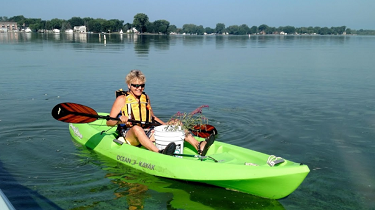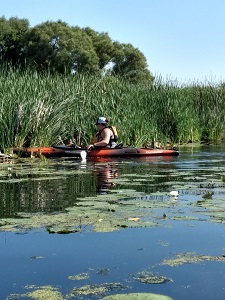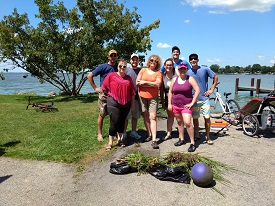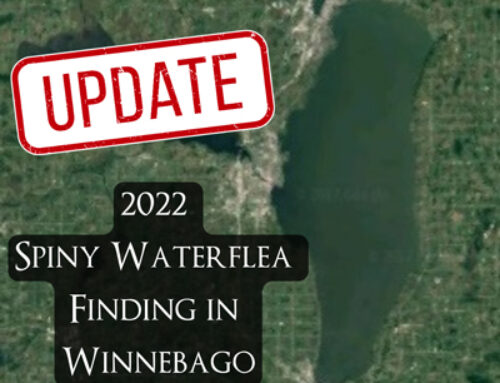No Water Hyacinth found, Other AIS Removed from the Winnebago Pool Lakes
For the second straight year, Fox-Wolf Watershed Alliance staff helped to search for aquatic invasive species (AIS) on the Winnebago Waterways system. The staff was searching specifically for water hyacinth, a free-floating perennial plant native to South America. With several teams of people in kayaks and boats armed with binoculars, the team scoured all the areas where water hyacinth has previously been found in the system. We are pleased to report that no water hyacinth was found! Areas searched included channels in and around Winneconne and down into Lake Butte des Morts. Water hyacinth has previously been found in local waterways in 8 Wisconsin counties, including in Lake Winneconne. The plant was first reported to the DNR in October 2015 by a citizen volunteer. Previous efforts since 2015 have found plants in the waters around Winneconne and all found plants were removed by the Wisconsin Department of Natural Resources (DNR) and partners (see the map at the bottom of the page). Water hyacinth has the ability to quickly dominate a system and there is concern that the plant may be able to establish a population in the lake.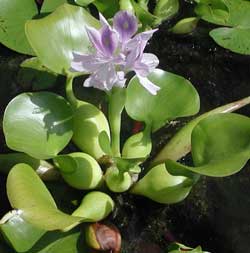
DID YOU KNOW?
Water hyacinth is a major problem in the American Southeast!
There was once an attempt to introduce hungry, hungry hippos to gobble it up! Read about it HERE!
Water hyacinth has thick, green, waxy leaves that are attached to an inflated petiole that helps keep the plant afloat and upright. The roots hang below the plant in the water. In addition, the lavender flowers have a yellow spot in a larger blue-purple blotch on a petal. Water hyacinth reproduces very quickly (doubling in number in as little as 6 days) and forms large, dense mats that can interfere with boating, swimming, and other waterway uses. These mats can reduce the dissolved oxygen in the water which affects underwater animals such as fish. Since the mats can grow very large, very little sunlight can reach the bottom of the lake or stream, leading to a reduction of native plant growth. The seeds that are produced by the plant can also lay dormant for 15-20 years and still successfully germinate.

While the plant is very unique, water hyacinth is a Prohibited species under Wis. Adm. Code ch. NR 40. It is illegal to transport, possess, transfer, or introduce the plant without a permit issued by DNR. If you think you have found water hyacinth, please contact your local AIS County Coordinator Chris Acy at chris@fwwa.org or by calling 920-460-3674. You can also call the DNR TIP line at 1–800–TIP–WDNR (1–800–847–9367).
While no water hyacinth was found, the Fox-Wolf Watershed Alliance team did remove several bags full of other aquatic invasive species including Flowering Rush and Purple Loosestrife. Several items of trash were removed from the water as well! Check out the pictures below!
If you are interested in becoming a citizen volunteer to help protect our lakes, contact Chris Acy, Winnebago Waterways AIS Coordinator, at chris@fwwa.org or (920)460-3674. For more information about similar aquatic invasive species monitoring projects, visit http://WinnebagoWaterways.org.
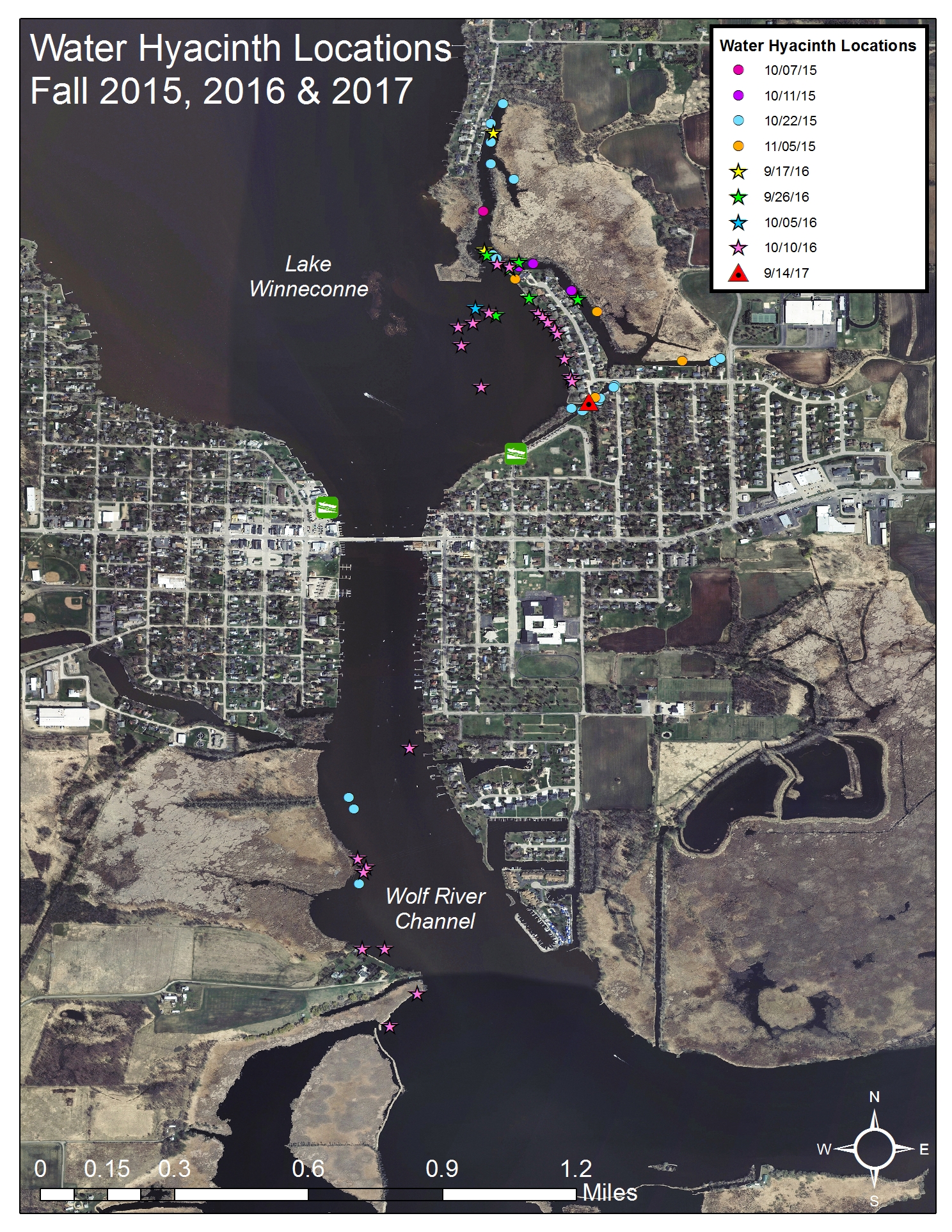
Winnebago Waterways is a Fox-Wolf Watershed Alliance program. The Fox-Wolf Watershed Alliance is an independent nonprofit organization that identifies and advocates effective policies and actions that protect, restore, and sustain water resources in the Fox-Wolf River Basin.
To learn more about water hyacinth and its impact to Wisconsin’s waters and economy, visit http://dnr.wi.gov/topic/Invasives/.
This article was written by Chris Acy, the AIS Coordinator for the Winnebago Waterways Program covering Calumet, Fond du Lac, and Winnebago Counties.

